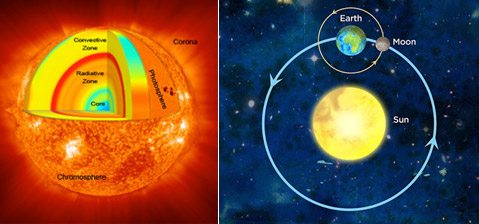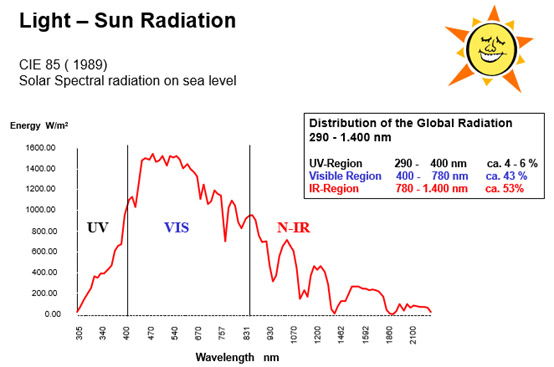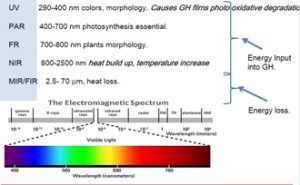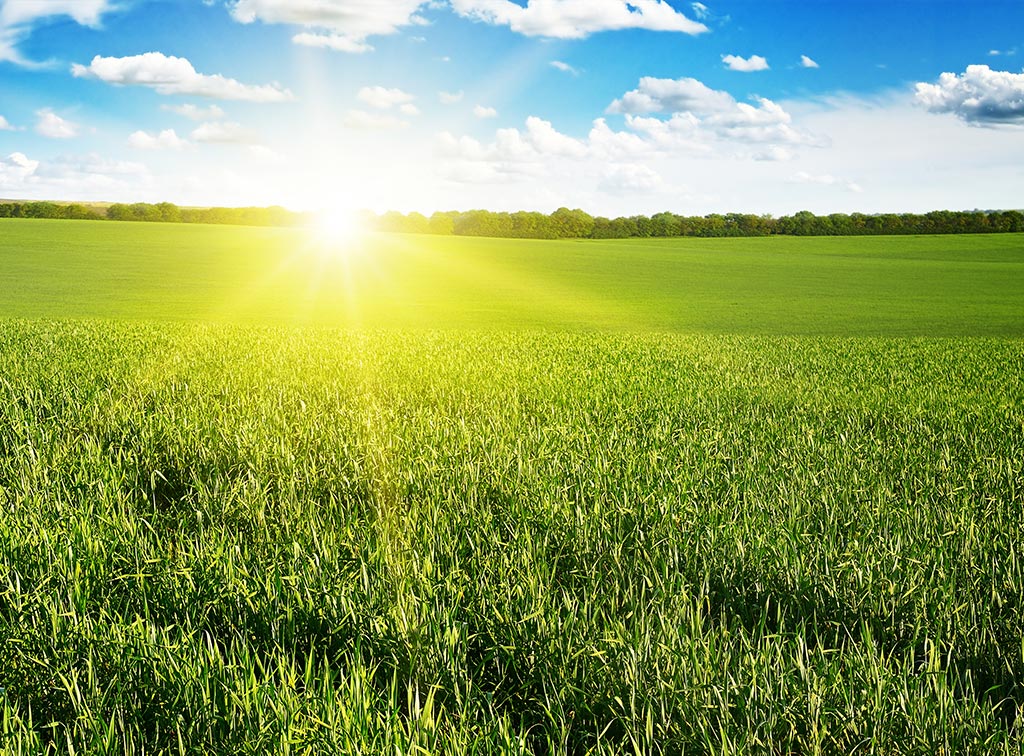
Light
The main source of light on Earth is the Sun. Sunlight provides the energy that green plants use to create sugars mostly in the form of starches, which release energy into the living things that digest them. This process of photosynthesis provides virtually all the energy used by living things.
Light goes through film



Solar radiation spectrum is usually divided into three main ranges, based on the wavelength measured in nanometers (nm):
- Ultra Violet (UV) – from 220 nm to 400 nm.
- Photosynthetically Active Radiation (PAR) – from 400 nm to 700 nm;
Visible light – from 380 to 700 nm – overlaps in most parts with PAR.
- Infra Red (IR) (Near/Middle/Far) – from 780 nm to 1 mm.
Ultra Violet (UV)
UV ranges from 100 nm to 400 nm. The Ozone layer absorbs the short-wave part up to 290 nm. The UV range – although it is only 6% of the total radiation – is highly energetic and may cause film degradation.
More phenomena related to UV: UV is essential for the development of some colors and fragments in flowers, vegetables and fruits. On the other hand, blocking the UV suppresses activity of insects (Anti-Virus) as well as helping enhance film stabilization. UV blocking is needed while growing red roses. Some fungus species need UV light to trigger sporulation; hence, UV Blocking will slow down this process.

POLITIV variety of hydroponic films are based on the most advanced technology of stabilizers and absorbers in order to get maximum lifetime, even under the highest radiation conditions.
POLITIV supplies wide hydroponic film selection with several degrees of UV Blocking, starting from Anti-Virus and Anti Blackening, through Bee-friendly and UV Open or «Nectarine». POLITIV TDS specifies the UV Transmission in the relevant ranges.
Photosynthetically Active Radiation & Visible Light
Light or visible light appears within the portion of the electromagnetic spectrum that can be perceived by the human eye. Visible light is usually defined as having wavelengths ranging from 380 nm to 740 nm.
More useful in agriculture is the Photosynthetically Active Radiation (PAR), ranging from 400 nm to 700 nm. This part of Light is essential to all plants. The irradiance of PAR can be measured in energy units (W/m2).
UV Vis instrument, used in POLITIV lab, calculates PAR percentage transmitted by the film when light flux is perpendicular to the film, according to the industry standards (such as EN 2155-5, ASTM D 1003 etc.).
POLITIV supplies wide film portfolio with different degrees of Light Transmission (LT).
INFRA RED (IR)
Infra-Red spectrum of light is the radiation ranging from 780 nm to 1 mm.
It is often divided into three sub-categories:
- NIR (Near Infra-Red) – from 780 nm to 2,000 nm.
- MIR (Middle Infra-Red) – from 2,000 nm to 5,000 nm.
- FIR (Far Infra-Red) – from 5,000 nm to 1 mm.
NIR range might contribute to overheating greenhouses. In hot areas, greenhouse’s inside-temperature may cause heat stress disorders in plants such as: water loss, enhanced water uptake, germination decreased and early seedling growth, reduced crop productivity, leaf curling and folding, dehydration, tips burning, etc.
POLITIV offers a variety of products enable to reduce extreme temperature in greenhouses: Milky, Smart Aluminum and Everest.
Far IR range (also referred as Thermal IR) enables greenhouse emitting energy back to the sky (during nights when there is no radiation coming in). Greenhouse temperature can drop down due to IR radiation (black body).
Thermal IR film will reduce heat loses during cold nights. POLITIV IR film designed to absorb most of the IR radiation in order to prevent energy losses.
Measuring IR range is done by FTIR. Thermicity is defined by the percentage of IR goes through the film ranging from 1400 cm-1 to 700 cm-1.

POLITIV Thermal IR film includes various items of changing thermicity, in combination with either transparent or diffused light transmission.








